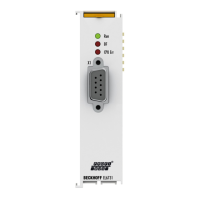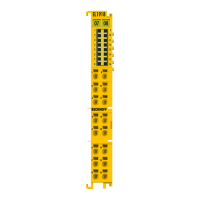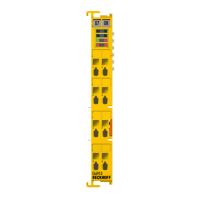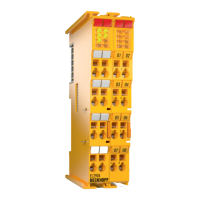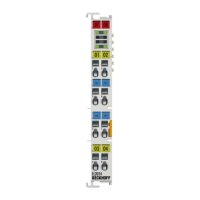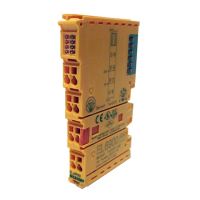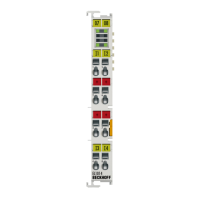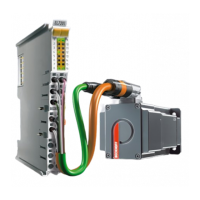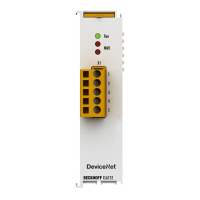Appendix
EL34xx278 Version: 1.5
EL3443-0013
Hardware (HW) Firmware Revision no. Release date
00* 03 EL3443-0013-0018 2018/12
04 2019/01
EL3443-0013-0019 2019/01
05 EL3443-0013-0020 2019/03
06* 2019/07
EL3453
Hardware (HW) Firmware Revision no. Release date
01* EL3443-0010-0016 2018/07
01 EL3443-0010-0017 2018/12
02 EL3443-0010-0018 2019/02
03* 2019/05
EL3483, EL3483-0060
Hardware (HW) Firmware Revision no. Release date
01* 01 EL3483-0000-0016 2018/06
02 EL3483-0000-0017 2018/08
03 EL3483-0000-0018 2018/12
04 2019/01
EL3483-0000-0019 2019/01
05 EL3483-0000-0020 2019/03
06* 2019/05
*) This is the current compatible firmware/hardware version at the time of the preparing this documentation.
Check on the Beckhoff web page whether more up-to-date documentation is available.
8.4 Firmware Update EL/ES/EM/ELM/EPxxxx
This section describes the device update for Beckhoff EtherCAT slaves from the EL/ES, ELM, EM, EK and
EP series. A firmware update should only be carried out after consultation with Beckhoff support.
Storage locations
An EtherCAT slave stores operating data in up to 3 locations:
• Depending on functionality and performance EtherCAT slaves have one or several local controllers for
processing I/O data. The corresponding program is the so-called firmware in *.efw format.
• In some EtherCAT slaves the EtherCAT communication may also be integrated in these controllers. In
this case the controller is usually a so-called FPGA chip with *.rbf firmware.
• In addition, each EtherCAT slave has a memory chip, a so-called ESI-EEPROM, for storing its own
device description (ESI: EtherCAT Slave Information). On power-up this description is loaded and the
EtherCAT communication is set up accordingly. The device description is available from the download
area of the Beckhoff website at (https://www.beckhoff.de). All ESI files are accessible there as zip files.
Customers can access the data via the EtherCAT fieldbus and its communication mechanisms. Acyclic
mailbox communication or register access to the ESC is used for updating or reading of these data.
The TwinCAT System Manager offers mechanisms for programming all 3 parts with new data, if the slave is
set up for this purpose. Generally the slave does not check whether the new data are suitable, i.e. it may no
longer be able to operate if the data are unsuitable.
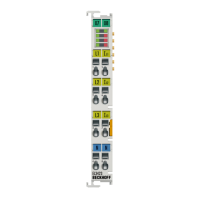
